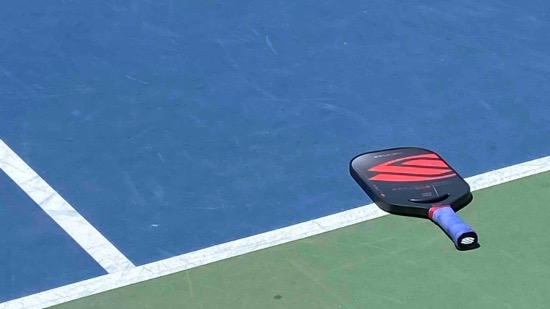For those who are looking to play pickleball singles, get ready to sweat. There’s a lot of movement necessary to cover the court and a lot of finesse needed with your shots. Pickleball singles is quite different than doubles, for obvious reasons – you’re all alone – however, understanding pickleball singles strategy elements is essential for your enjoyment and success.
Pickleball Singles Rules
- Like pickleball doubles, games are usually played to 11 points, win by 2 points. Points can only be scored by the server.
- When a fault is committed by the receiver, the server gets a point. If a fault is committed by the server, the server loses their serve.
- The server begins the game from his/her right side of the court. If the server scores a point, they switch sides and serve from the left side of the court. In that way, when the server’s score is even, the server will serve from the right side of the court. When the server’s score is odd, the server will serve from the left side of the court.
- The serve must be an underhand serve in which the ball is contacted below the server’s naval. The serve must be struck with both feet behind the baseline. Neither foot may touch the baseline or the court until after the serve is struck.
- The serve must be hit into the opponent’s diagonally opposite service area. If the serve contacts any part of the non-volley zone (NVZ) line it is considered “short” and is a fault.
- The serve must bounce before the opponent can return it and the return must bounce before the server can return it (double-bounce rule). Subsequent hits may be struck before or after the ball has bounced.
- The server may only have 1 service attempt, except in the case of a let (the ball hits the top of the net, but still lands in the proper service court).
- Players standing in the non-volley zone or on the non-volley line may not strike a ball before it bounces.
- If the ball contacts any part of the sideline or baseline, it is considered “in.”
- If the ball is hit into the net or out of bounds, it is a fault. If the ball bounces twice before being hit by the receiver, it is a fault for the receiver.
- If a player, player’s clothing or paddle touches the net while the ball is in play, it is a fault.
- If the ball hits a player or player’s clothing, it is a fault. If the ball hits the ceiling, wall, or any other permanent object before landing in the opponent’s court, it is a fault.
Pickleball Singles Serving
A tough pickleball serve is always a good thing! In pickleball singles, a tough pickleball serve is ideal. Keep them deep and with good pace, varying them frequently to keep your opponent off guard. Hitting the same pickleball serve each time will allow your opponent to anticipate his/her next shot, which will put you on the defensive.
In pickleball singles, serve as close to the centerline as possible. This will keep you in better position for a return of serve. Serving near the centerline will minimize your distance to each sideline.
Pickleball Singles Return of Serve
Your return of serve should be deep and to the corners. Hitting returns down the sidelines will make your opponent have to cover more of the court and will force their third shots to be uncomfortable. You generally want to hit your return of serve to the back third of the court. Also, hitting your pickleball return of serve to a back corner, allows you to get to the non-volley zone easier / faster while your opponent figures out how to respond with a third shot.
As you improve and build confidence with your pickleball return of serve, target your opponents backhand as backhand shots are typically weaker shots for more pickleball players.
Pickleball Singles Third Shot
After the return, if your opponent stays at the baseline, NEVER hit a third shot drop. Keep your opponent back at the baseline and don’t invite them into the net. Move your opponent around as you determine when you can get to the non-volley zone.
Pickleball Singles – Let’s Go!
Here are a few more pickleball singles strategy tips:
- Face your opponent. This puts you in a better position to return a shot to either side.
- Vary your shots so opponents can’t anticipate you. Occasionally try to make them think you’re doing one shot, but hit another.
- Generally, move left or right as your opponent moves, but stay closer to the center line.
- Use lobs only when necessary and your opponent is at the non-volley line.
- When your opponent has managed to get to the non-volley line and you are still back, you have 3 choices:
- A hard passing shot.
- A drop shot that hits the ground at your opponent’s feet.
- A lob.
For more information on Pickleball Singles Strategy, view our Pickleball Singles webpage or the USAPA website.

